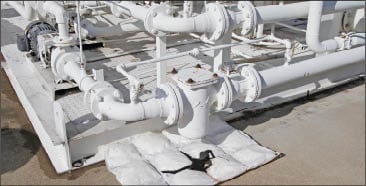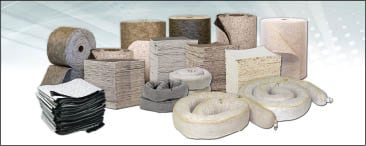For years, clay has been the go-to product for spill containment simply because it was cheap and did the job. While clay, also referred to as diatomaceous earth, sand or kitty litter, will always have a place in in spill containment, if it’s the only product being used to clean up hazardous and other spills, it could be costing your facility more than you realize. With more modern options available — including everything from polypropylene to super-absorbent polymers to corn cobs and cotton — experts suggest a clean-up plan including more than one type of absorbent is the most cost-effective and safest way to go.
“A lot of people in processing are old school and think clay is best way to clean up a spill. But anyone still exclusively using clay for spill containment is a fool,” says Lenny Johnson, president of Chemtex, Inc. (Cumberland, R.I.) “Clay has a purpose and place in spill clean up, but it should be used in conjunction with other products to do the job in a way that cuts down on labor and disposal costs in cleaning up a spill — clay is not the only method in existence.”
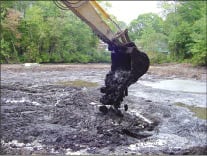 |
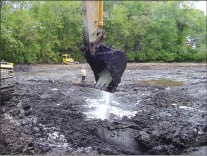 |
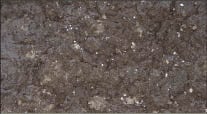 |
What’s available
The spill containment industry is now host to numerous products, such as melt-blown polymer, recycled cotton and high-tech super-absorbent polymer products. While each material has its own set of characteristics and price range, almost all have advantages over clay-based products.
For example, polymeric products, like those available from New Pig (Tipton, Pa.) and Chemtex, are lighter in weight and more absorbent than clay. “Typical clay-based absorbents aren’t really absorbent,” says Chris Iuzzolino, product manager for absorbents and spill control product lines with New Pig. “Materials like oil will coat only the outer surface of the clay, which means you need more product to clean up a spill, so they aren’t really efficient. Polypropylene is really absorbent, so you use less product when cleaning a spill, which means there is less to dispose of on the back end.”
Johnson of Chemtex believes that despite the lower upfront cost of clay, it actually costs two times more than polymeric products would in a real-life spill containment scenario. He points out that the main difference between clay and melt-blown polymer is that clay absorbs 0.5 to 1 times its weight, while the non-woven polymeric product his company offers absorbs between 12 to 25 times its weight, depending on the viscosity of the liquid. “If you have a chemical spill that requires 10 bags of clay, you would likely only need one bale of pads to absorb the same spill,” he says.
Using this scenario, he explains that to move 10 bags of clay at 40 pounds each would require someone with a forklift. Conversely, one person could lift the 15-pound bale of pads and bring it to the spill site. In addition, you would need multiple workers in protective gear with shovels and brooms to lay down the clay and then scoop and sweep it. One person could do the same job without the shovels and brooms, just by putting the pads on the spill, and disposing of them with a gloved hand into a drum. He adds that it is likely cheaper to dispose of the contaminated pads, as well. He estimates that 40 bags of contaminated clay would fill at least two drums, while the single bale of contaminated pads would require just one drum, meaning the facility would also save on disposal costs if those costs were incurred either by weight or number of drums.
Sellars Co. (Milwaukee, Wis.) offers absorbent products made from 80% recycled cellulose fibers that are suitable for cleaning up most leaks, drips and spills. Its Preferred pad has been proven in independent laboratory tests to absorb as much as two of the leading competitor’s heavy-weight melt blown pads, which means it would pick up many times over what could be achieved using clay. “Users spend less time picking up saturated pads and rolls with the Preferred line of absorbents,” says Mike Radovich, vice president of sales with Sellars. The products are made from recycled, 100% natural cotton grown in the U.S. and are “incredibly absorbent if left untreated.” In addition, he says, “We are able to keep our costs down because these recycled paper products aren’t part of the global market. Unlike oil-derived polymeric products, our pads haven’t take a price increase in five years.”
Then there are granular products such as Spill King (Palm Beach Gardens, Fla.) absorbent material, which is a non-toxic, non-flammable, environmentally safe and lightweight amorphous silica product. The substance can absorb all materials except hydrofluoric acid, leaving little or no residue. “Less than half a pound of Spill King can completely absorb one quart of motor oil without leaving any residue to re-clean,” says Bob Irving, president. “Clay, earth and sand products require 15 lb of material to absorb the same amount and would leave a slippery residue.”
Again, the benefits here include the upfront savings of using less product to capture a spill, which results in greatly reduced disposal costs on the back end. “This absorbent will save money on shipping, storing and disposal. Its light weight and high absorbency will make it easier to handle,” notes Irving. “Clay, earth and sand products come in 40 to 50 lb bags, while one Spill King bag at 10 lb equals 3 of bags of clay product.”
And then there are the super absorbent polymers. M2 Polymer Technologies, Inc. (West Dundee, Ill.) offers Waste Lock products, which are a class of cross-linked, non-biodegradable polymers capable of absorbing and retaining up to 500 times their weight in water. “Waste Lock products are widely used in the environmental industry to treat many types of aqueous wastes,” says Martin Matushek, owner of the company. “The advantage of these water-swellable super absorbent polymers is that they can absorb many times their weight in water with nominal or negligible increase in waste volume or weight.
“I’ve gone into meetings with this stuff with people who were dead set against spending what we charge for the absorbent, thrown a handful into their coffee cup and asked them to quickly calculate their labor savings and walked out with them buying it,” says Matushek. “It has its advantages even though it seems expensive up front. Yes, it costs $2/lb, but you may only need 10,000 lb of this, versus material that you could buy for $0.40/lb, but would need 80,000 lb. In addition, clay and mineral absorbents would take an hour to process a spill, but ours [super-absorbent polymers] takes 10 min. And then there are always the disposal cost savings you get when disposing of a fraction of what you would dispose of with clay.”
The right combination
While the proposed cost savings seem substantial, they shouldn’t be the only determining factor in product selection. “The problem with absorbents is that there is no one-size-fits-all product,” says Matushek. For this reason you need to consider several things when deciding what products to use in your facility.
Iuzzolino suggests the first consideration is the liquids stored in the facility. “Knowing what types of liquids you’re dealing with will clue you in to the types of absorbents or spill kits you need on hand. Many are designed to absorb certain types of liquids or might not be chemically compatible with what you have,” he says.
The second criteria should be quantities. “We tell customers to plan for the worst case scenario,” he notes. “If you have a 5,000-gal tank, but have a spill kit for 30 gal, you’re not really prepared.”
Finally, the chosen product must adhere to local, state and federal regulations regarding disposal. “If a customer sends waste to an incinerator, they want an absorbent with a high BTU value and low ash content,” Iuzzolino says. “Or if you’re sending material to a permitted, hazardous waste landfill that only accepts non-biodegradable absorbents, that is a very important consideration.”
It’s important to make the distinction between biodegradable or non-biodegradable absorbents. Although the absorbent materials themselves aren’t hazardous, once they absorb something, they must be treated and disposed of based on the material they now contain. So depending on how the liquid is classified, the saturated absorbent will have to go to either a hazardous or non-hazardous waste landfill, depending on regulatory classification. Usually hazardous waste landfills require non-biodegradable absorbents so they don’t break down in the landfill and release the toxin, while biodegradable absorbents are preferable for non-hazardous material because they create less waste in the landfill.
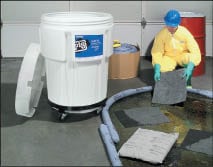 |
Even with all this taken into consideration, it’s important to note that nothing is perfect. As Jim Potts, director of operations with Northwest HazMat (Springfield, Or.), which both cleans up spills and sells spill kits, puts it, “There’s always a trade off when selecting absorbents. Some materials are cheaper to buy, but are heavier to put down, pick up and dispose of. We generally use what works fastest and does the best job.”
And often, a one-two punch of absorbents is needed, according to the experts. “There will always be a need for clay-based products because not all surfaces are perfectly flat,” says Radovich. “There are cracks and crevices in most surfaces and pads tend to not get into those areas, so follow up cleaning may be needed, and that will likely include clay-type products. But still, using a more absorbent and lighter material on the majority of the spill will reduce labor and disposal costs, even if a follow up with clay products is required at the end.”
Johnson agrees: “We are never going to do away with clay, but if the clean up uses pads or some other material for 90% of the spill and clay to get the rest, then instead of using and disposing of 50 bags of clay, you can get by with maybe five bags of clay and one bale of pads. Everyone concerned with limiting costs and having a proper spill plan should have multiple products on hand because you never know what a job will entail.”
